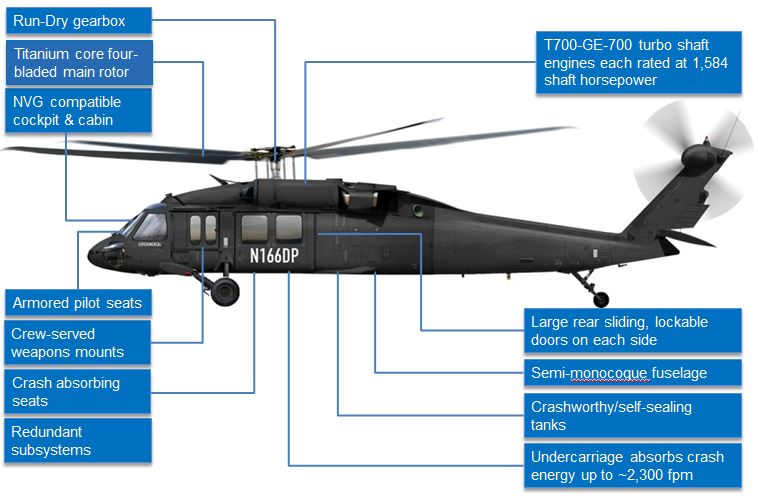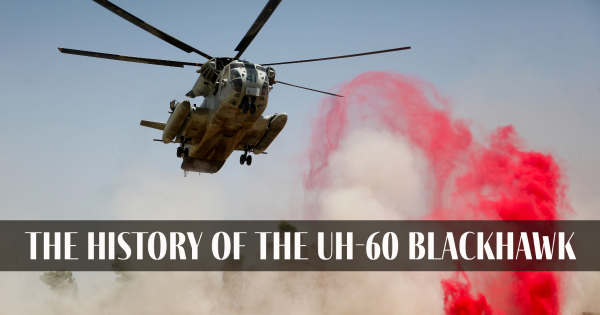Flying High: UH 60 Helicopter Safety And Security Protocols You Need To Know
Flying High: UH 60 Helicopter Safety And Security Protocols You Need To Know
Blog Article
Navigating Uh 60 Helicopter Laws and Compliance Needs

Regulatory Structure Review
The regulative framework governing UH-60 helicopter procedures includes a complex set of policies and standards established by aeronautics authorities. These regulations are designed to ensure the secure and effective operation of UH-60 helicopters in different environments. The Federal Aeronautics Administration (FAA) plays a main duty in developing and applying these guidelines, which cover a variety of functional elements, consisting of airworthiness criteria, pilot credentials, maintenance requirements, and operational treatments.
Compliance with these policies is necessary for helicopter drivers to preserve the highest degree of safety and security and operational stability. Failing to comply with these guidelines can result in serious consequences, including accidents, injuries, and governing assents. Consequently, helicopter drivers should remain informed about the most recent regulatory developments and make certain that their operations remain in full compliance with all suitable guidelines and standards.
Airworthiness Inspections and regulations
Amidst the regulative framework regulating UH-60 helicopter procedures, a critical emphasis rests on conformity with Airworthiness Directives and conducting extensive examinations to promote safety standards and operational dependability. Airworthiness Instructions (Advertisements) are provided by aeronautics authorities to resolve hazardous problems in aircraft, including the UH-60 helicopter, and mandate specific activities to be taken by operators or proprietors. Compliance with ADs is obligatory, and failure to comply with these regulations can lead to significant consequences, consisting of grounding of the airplane.
Routine assessments are extremely important to guaranteeing the airworthiness of UH-60 helicopters. By sticking to a rigorous evaluation regimen, operators can spot and deal with possible problems immediately, consequently enhancing the safety and dependability of UH-60 helicopter procedures.
Pilot Credentials and Training

Pilot training for UH-60 helicopters is detailed and covers a vast array of topics, consisting of aircraft systems, emergency situation procedures, navigation, and mission-specific training. Additionally, pilots undertake simulator training to practice different emergency situation circumstances in a regulated environment. This training helps pilots develop the necessary skills to handle challenging situations successfully.


Moreover, ongoing training and specialist advancement are vital for UH-60 pilots to remain existing with the current policies, technology, and finest practices. By purchasing pilot qualifications and training, operators can improve safety and security, enhance efficiency, and make sure compliance with governing requirements in the operation of UH-60 helicopters.
Functional Limitations and Requirements
Pilot certifications and training act as the structure for comprehending the functional constraints and demands related to UH-60 helicopter operations (uh 60). These operational restrictions are implemented to guarantee the security of the staff, guests, and the aircraft itself. Functional constraints may include elements such as climate conditions, weight limitations, altitude restrictions, and functional borders. It is important for pilots to be fluent in these constraints to make informed decisions during trip procedures. Furthermore, conformity requirements, such as adhering to certain trip paths, interaction procedures, and emergency treatments, are essential for keeping functional safety and security and regulative compliance. Pilots have to stay present with all functional limitations and demands through routine training, briefings, read more and reviews to alleviate threats and make certain effective and secure UH-60 helicopter procedures. By focusing on adherence to these operational guidelines, pilots can enhance the total safety and performance of their goals while promoting regulatory criteria.
Emergency Treatments and Compliance Testing
Efficient emergency treatments and extensive conformity screening are vital elements of maintaining functional safety and security and regulative adherence in UH-60 helicopter procedures. Emergency situation treatments incorporate procedures for different circumstances, consisting of engine failings, fires, hydraulic problems, and more. Pilots and team participants must be fluent in these procedures to respond swiftly and efficiently in emergency situations. Normal conformity testing guarantees that the helicopter fulfills all governing requirements stated by aeronautics authorities. This testing involves thorough assessments, checks, and evaluations to verify that the airplane is airworthy and in conformity with all relevant regulations.
Additionally, conformity screening might include simulations of emergency scenarios to analyze the crew's feedback and the helicopter's efficiency under anxiety. By prioritizing emergency treatments and conformity testing, UH-60 drivers can alleviate dangers and demonstrate their commitment to safety and security and regulatory compliance.
Final Thought
To conclude, adherence to regulative structure, conformity with airworthiness instructions, pilot qualifications and training, operational limitations, and emergency situation treatments are essential for browsing the regulations and demands of running a UH-60 helicopter. uh 60. It is critical for operators to prioritize safety and security and make sure complete compliance with all relevant laws to maintain the airworthiness and operational integrity of the airplane
Browsing the regulatory landscape surrounding UH-60 helicopter procedures demands a nuanced understanding of the detailed web of regulations and compliance needs.Compliance with these policies is crucial for helicopter operators to maintain the highest degrees of safety and functional honesty.Among the regulative structure regulating UH-60 helicopter operations, an essential focus lies on browse around here compliance with Airworthiness Directives and performing comprehensive inspections to support security requirements and functional integrity.Effective emergency treatments and detailed compliance screening Read Full Article are crucial parts of maintaining operational safety and governing adherence in UH-60 helicopter operations. Normal compliance testing makes sure that the helicopter fulfills all regulative needs established forth by aeronautics authorities.
Report this page